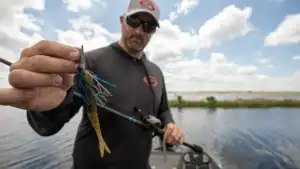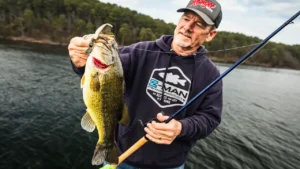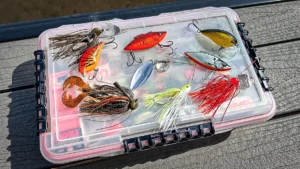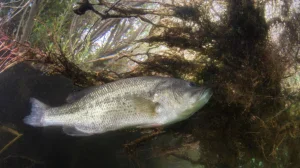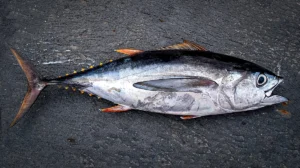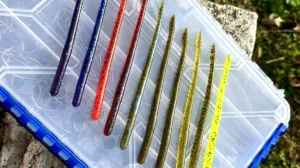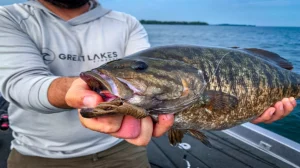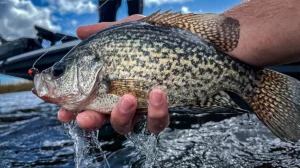Once the water temp reaches the high 70’s or 80’s, fish start the transition into their summer haunts. This means that the majority of bass often push off the bank in search of deeper and cooler water to reside in. This is a great time of year to get offshore and practice using your electronics on the various types of structure fish relate to during this time of year.
One extremely popular way to fish this time of year is on ledges for big schools of bass. This style of fishing attracts the most attention this time of year, and will undoubtably get the most fishing pressure, especially on well known ledge lakes such as Guntersville or Lake Chickamauga.
One of my favorite ways to get out of the crowd during the summer months is to target submerged grass with a big ChatterBait. This can be a great way to catch a ton of fish and get away from the crowds. Fishing a ChatterBait offshore can be a super effective way to catch a big limit of fish, but there are a few key aspects to keep in mind while implementing this strategy.
WHEN TO FISH DEEP GRASS
My absolute favorite time to fish submerged grass is once the water heats up and fish begin to move offshore in search of more comfortable water. I find this to be the best time of year to fish this offshore grass because, on a lot of the lakes, shallow water becomes less preferable for these predatory fish. High temperatures can often push baitfish such as bluegill or shad off the bank in search of deeper cover. Deep grass provides the perfect habitat for baitfish wanting to escape from the high water temps while also having plenty of adequate cover to hide from other predatory fish.
As the baitfish move to this deeper grass in search of protection, the bass are soon to follow. This is when I like to start targeting these offshore grass patches. Bass will often use this cover as an ambush point to feed on the baitfish that reside in these areas during summer months. A ChatterBait is a perfect imitation to match the different types of forage these fish are keying in on.
Another time I really like to key in on offshore grass is when the water gets stained. Grass often acts as a natural filter. This means that when the water dirties up fish will oftentimes load up in the grass where there is cleaner water.
One of the best days I’ve ever had fishing submerged grass was fishing a pocket with really dirty water and lots of vegetation. There was construction going on in this specific pocket and it caused the water to be far dirtier than the rest of the lake. I quickly noticed tons of shad that had stacked up in this pocket due to this dirty water.
I then proceeded to throw a ChatterBait around ticking the tops of the grass in this dirty pocket. I went on to catch more than 20 fish over 3 pounds, and a couple pushing the 5-pound mark. This was a very small patch of grass, however the fish were loaded in it due to the dirtier water and large presence of baitfish. Fishing offshore grass can be a super productive strategy to catch tons of good sized fish, however there are several nuances that can increase your success fishing this type of cover.
WHERE TO FISH
Begin by targeting irregularities in the grass. Oftentimes the grass is too deep to see with your eyes. This is where I like to implement my electronics in order to find sweep sots throughout the grass. I will oftentimes graph over these patches using side scan in order to get an accurate picture of what the area looks like. I will then look for things such as holes in the grass, edges, points or schools located in or around the grass.
One of my favorite types of cover to fish is an isolated grass patch. These often serve as a great ambush points for bass to feed on baitfish. These are some of the most high percentage areas to get a bite on as opposed to fishing a large field of grass.
Another irregularity I like to look for is a hole in the grass or point sticking out from the main grass patch. These areas are often where fish will group up to feed on baitfish. You can oftentimes see fish staged right off the point, or on the hard spots surrounding the grass using your side scan or live sonar. These fish often position right on the edge of the grass and will shoot out into the openings in order to feed.
I also look for other types of cover mixed in with grass such as wood or rock. Fish often use these irregularities to stage on and can be a great place to target for an extra bite when fishing these types of cover. I like to bang my ChatterBait off the wood or rock which will often trigger a fish into striking. Offshore grass is a great way to catch a ton fish this summer, however it is important to understand how to properly fish this type of cover in order for it to be effective.
DIFFERENT TECHNIQUES
When fishing a ChatterBait through grass, it is extremely important to make contact with the grass. Ticking the tops of grass stems is a great way to generate reaction strikes and call those fish up out of cover. The best way to do this is to keep your ChatterBait right above the grass line. This allows your bait to hit the grass and then shoot out at an increased speed, often generating a strike.
When I am fishing around holes in the grass, I like to pause my ChatterBait allowing it to fall down into the hole. I then like to speed up the bait and rip it out while ticking the tops of grass. This will often cause the bass to come out of the cover and commit to your bait.
I also like to let my bait pause when fishing around grass points or edges. I allow the bait to fall to the bottom on the hard spots surrounding the grass then quickly retrieve the bait ripping it through the tops of the grass. This will often generate strikes from bass using these grass edges or points as cover.
Another strategy I like to implement is fan casting around these grass fields keeping my bait just above the grass line. This allows the bait to tick the top of the grass without getting bogged down. This is a great way to pick up a few extra keepers by catching the fish that are dispersed throughout the grass field.
HOW TO PICK THE RIGHT SIZED CHATTERBAIT
When fishing a ChatterBait around grass, it is super important to pick the right size. I rotate between the 3/8, 1/2 or 3/4-ounce Z-Man Jack Hammer ChatterBait. If the top of the grass patch is just beneath the surface, I like to use a 3/8 ounce chatter bait paired with a bulky paddle tail trailer such as a Strike King Rage Swimmer. This helps keep the bait high in the water column and from getting bogged down in the grass.
If the top of the grass is around 5-8 feet beneath the surface, I will opt for the 1/2-ounce size. This allows you to keep the bait right it the strike zone while still being heavy enough to fish the bait at an increased speed without pulling it to the top of the water column. This size is my go to size for the majority of submerged grass scenarios.
Lastly, if the grass is around 10 feet or deeper, I will opt for the 3/4-ounce version paired with a Missile Baits Spunk Shad. This is a very streamline trailer which allows the bait to sink down lower in the water column and not get pulled up to the surface. These three sizes are all you need to cover any depth of grass you’re fishing with a ChatterBait this summer.
You can purchase a Z-Man Jack Hammer ChatterBait from these online retailers:
THE IDEAL SETUP FOR FISHING A CHATTERBAIT AROUND OFFSHORE GRASS
The next piece of equipment that is extremely important while fishing a ChatterBait around grass is your rod. I prefer a longer rod since you are oftentimes offshore, and not around any overhangs or possible snags. I also like the added casting distance these longer rods provide, as well as the added leverage you get on fish while reeling them to the boat. I like a medium-heavy rod with enough strength to snap the bait out of grass, while still being soft enough to adequately load up when setting the hook into a fish. My go to rod for these scenarios is a 7-foot, ’6-inch medium-heavy power Shimano Expride B.
For a reel, I like one with a slightly faster gear ratio that allows you to quickly burn the bait out of the thicker clumps of grass. I also like one with a larger sized spool in order to make long casts with larger line. I tend to up my line size from 15 to 17-pound test when fishing around grass. This is because fish can bury down in the grass which causes you too need that added strength to pull them out and get them to the boat. My go to reel for this scenario is a Shimano Chronarch MGL 150 in the 7:1 gear ratio.
Fishing submerged grass is a great way to get out of the crowds this summer and catch a ton of quality sized fish. Implementing these tips will help you have a more successful day of fishing offshore grass on your favorite body of water this summer.
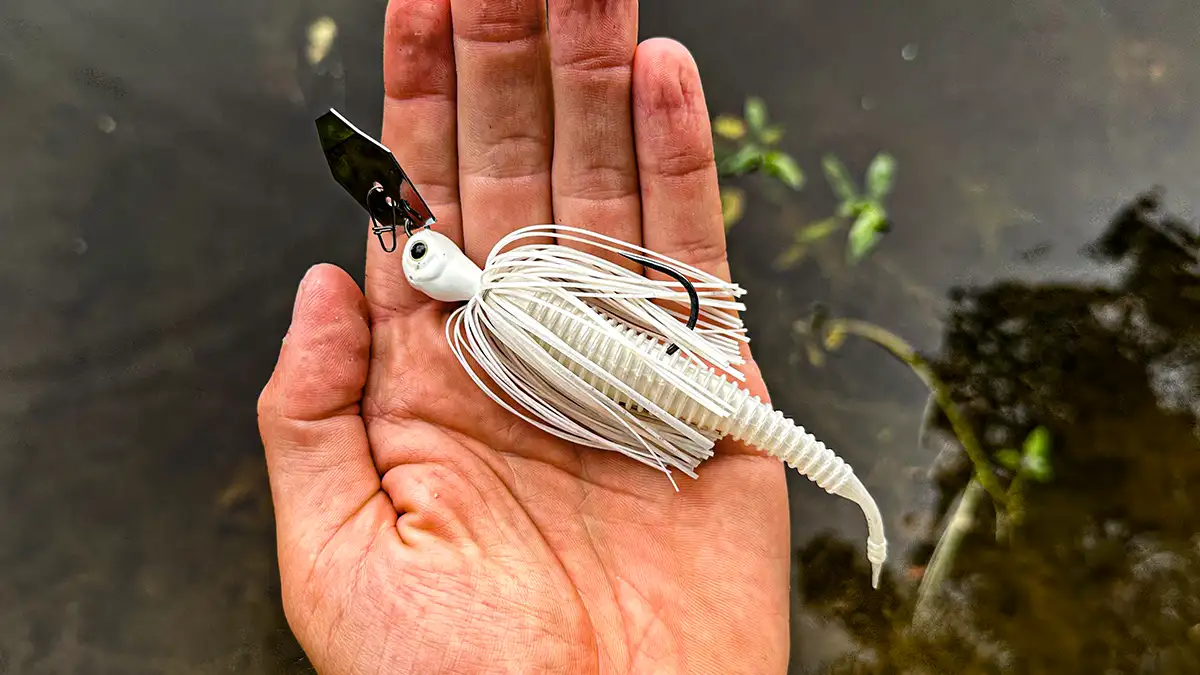

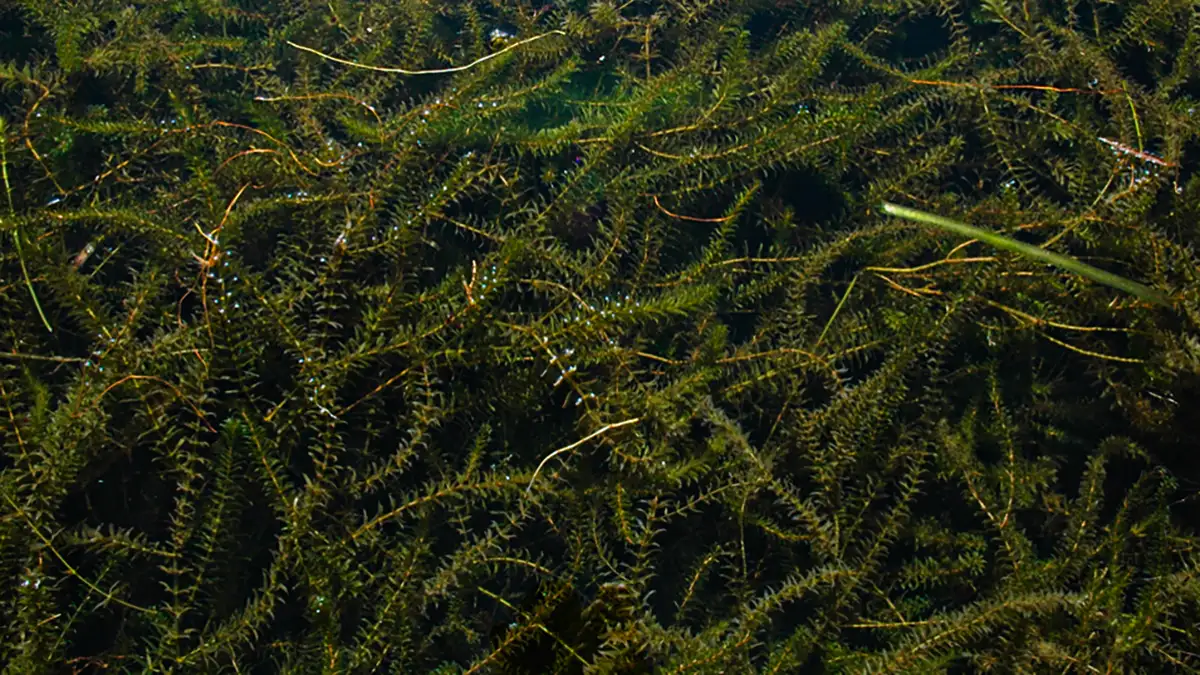

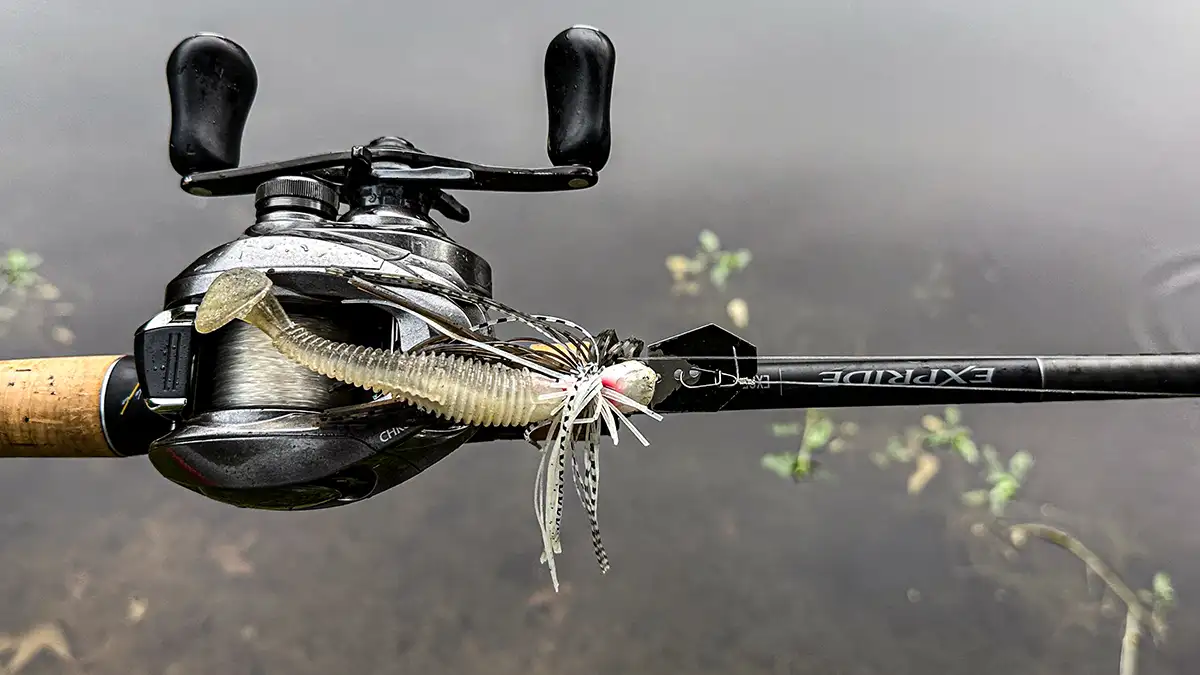

![[VIDEO] Casey Scanlon’s Go-To Trailers for Bladed Jigs](https://www.wired2fish.com/wp-content/uploads/2025/06/scanlon-trailers-300x169.webp)
